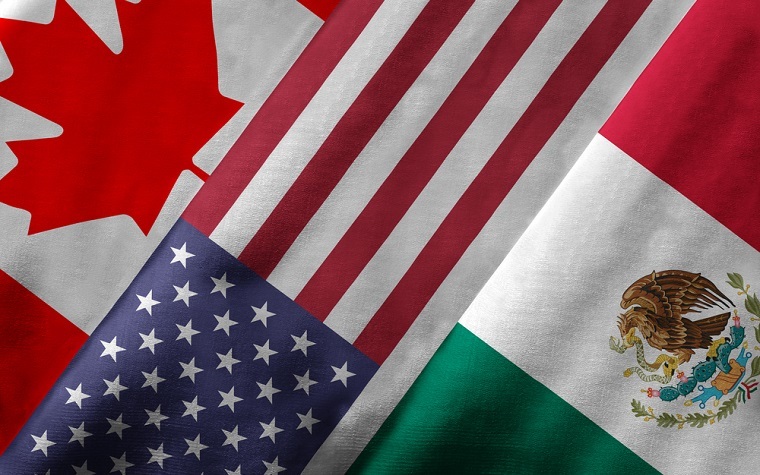The United States reported $93 billion in
North American Free Trade Agreement (NAFTA) freight in July 2015, as all modes excluding air carried less than in July 2014, according to TransBorder Freight Data released Tuesday by the U.S. Department of Transportation's Bureau of Transportation Statistics.
The overall annual value of all U.S.-NAFTA freight flows decreased 8 percent. Large decreases in the value of commodities moved by pipeline and vessel in July across the board were attributed to the reduced unit price of mineral fuel.
In July 2015 compared to July 2014, the value of airborne commodities increased by 3.4 percent while truck transport decreased by 0.6 percent and rail dropped by 14.5 percent. Vessel freight and pipeline freight values decreased by 26.3 and 34.8 percent, respectively.
As the most-heavily used mode for moving goods to and from Mexico, the United States and Canada, trucks carried 63.9 percent of U.S.-NAFTA freight, accounting for $30 billion of the $49.2 billion of imports (61 percent) and $29.4 billion of the $43.8 billion of exports (67.1 percent).
Rail remained the second-largest mode by value, moving 13.7 percent of all U.S.-NAFTA freight, followed by vessel (7.3 percent); pipeline (6 percent), and air (3.9 percent). The surface transportation modes of truck, rail and pipeline combined carried 83.7 percent of total U.S.-NAFTA freight flows.
For U.S.-Canada freight, $47.5 billion in July 2015 was down 14 percent from July 2014; no transportation mode carried a higher value of U.S.-Canada freight than in 2014.
Lower mineral fuel prices contributed to a year-over-year decrease in the value of freight moved between the U.S. and Canada. Mineral fuels account for a large share of freight carried by vessel and pipeline, which were down 28.3 and 36.4 percent respectively, year-over-year.
Trucks carried 57.5
percent of the $47.5 billion of freight to and from Canada, followed by rail, (14.3
percent); pipeline, (11 percent); vessel, (5.2
percent); and air (4.7
percent). The surface transportation modes of truck, rail and pipeline carried 82.8
percent of all U.S.-Canada freight flows.
For U.S.-Mexico freight, July 2015’s $45.5 billion was 0.8
percent
less than July 2014. Year-over-year, U.S.-Mexico air freight value rose 9.5
percent, the largest percentage increase of any mode, while truck freight increased by 4.7
percent. Pipeline freight was down 4.6
percent and rail freight declined 8.5
percent. Vessel freight decreased by 25.1
percent.
Trucks carried 70.6
percent
of the $45.5 billion of freight to and from Mexico, followed by rail (13.1
percent), vessel (9.5
percent), air (3 percent) and pipeline (0.9 percent). The surface transportation modes of truck, rail and pipeline carried 84.6
percent
of the total U.S.-Mexico freight flows.
US reports drop in NAFTA freight data for July




 Alerts Sign-up
Alerts Sign-up